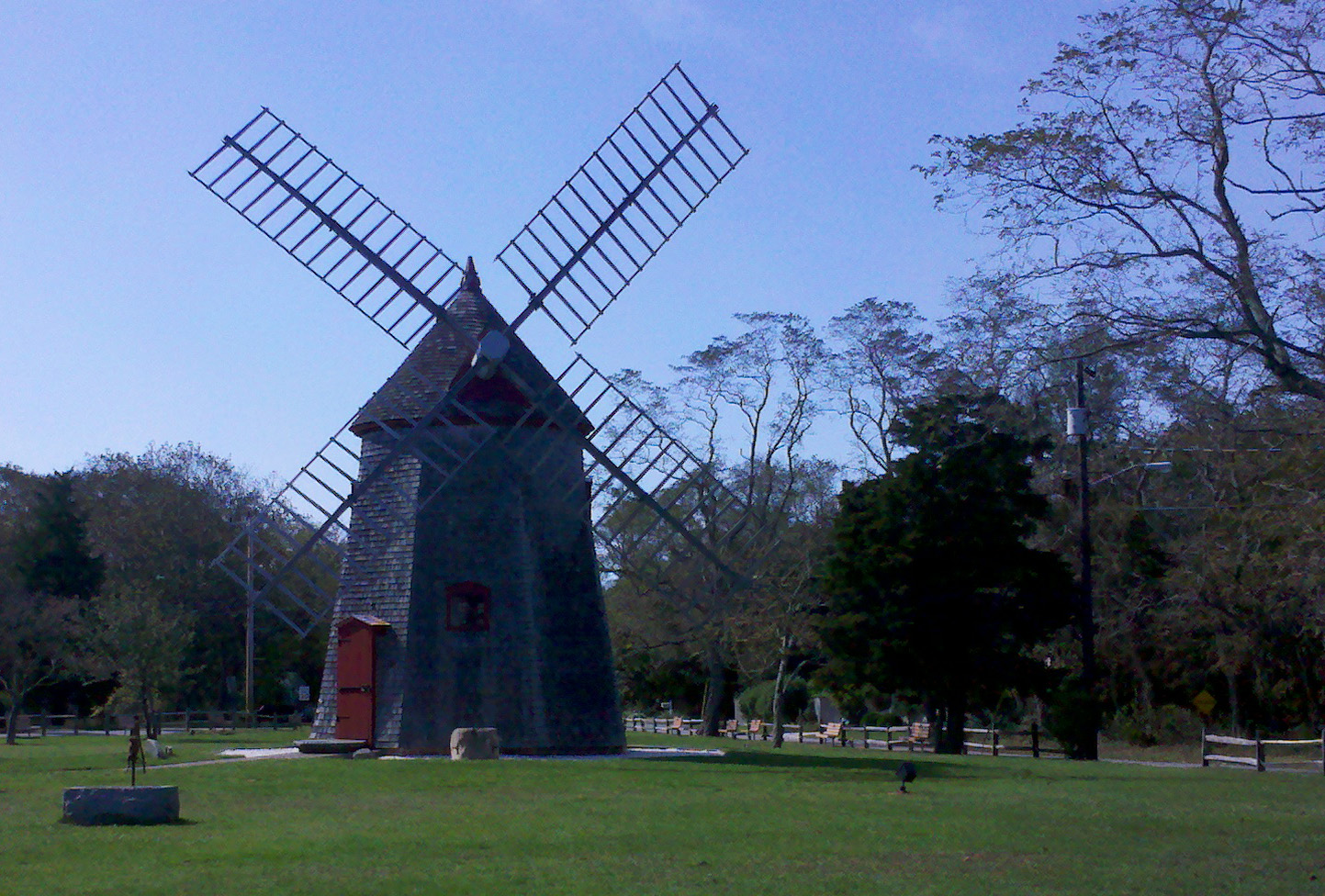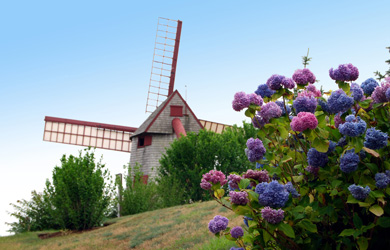When "milling" around Cape Cod on your next vacation, why not make it a point to visit a local windmill? Not only are they beautiful to look at with their large sails, intricate stonework, and interesting octagonal shapes, but also because a visit will send you back in time and give you a better understanding of the historical significance of windmills and their impact on the livelihood of Cape Cod.

Eastham Windmill, Cape Cod
With its fairly consistent ocean breezes, Cape Cod was an ideal location to erect windmills. The wind-powered mills ground corn into flour and corn meal, or, to be exact, wind-powered the sails, which in turn rotated the millstones, which ground the corn. Corn flour and corn meal were dietary staples in colonial times and a part of almost every meal.
The windmills also helped to provide salt, which, prior to refrigeration, was the best means to preserve food, especially meat and fish. Cape Codders could not only preserve food for their own use throughout the winter, but the salted fish also became a primary export, and thus a main source of income.
During the American Revolution, the British formed a blockade banning and intercepting any salt supplies from entering the Colonies. Needing to find a way to produce their own salt instead, the Colonists discovered that the power of a windmill could pump seawater into evaporating vats, which greatly increased the speed at which water could get from the sea to the vats. The entire process from seawater to salt took about six weeks, and 350 gallons of seawater produced approximately 80 pounds of salt. Without the windmills to pump the saltwater, the process would not have been efficient enough to produce adequate amounts of salt.
Although most of the windmills that originally dotted the coastline of Cape Cod are no longer standing, some have been preserved and are open to the public.
The Jonathan Young Windmill, built in the early 1700’s, has many of its original machinery in working order. Located in Orleans, it is open to the public in July and August.
First built in 1791 in South Dennis, the Judah Baker Windmill was moved to Kelley’s Pond in Dennis, and from there to the edge of Bass River in Yarmouth. Sometime prior to 1866, it was moved again to a spot near its current location on River Street in South Yarmouth, where it milled grain for many years. It is open to the public during the summer months.

Higgins Farm Windmill, Drummer Boy Park, Brewster
Higgins Farm Windmill, located at Drummer Boy Park in Brewster, was erected in 1795 and ground grain for 105 years. It was originally located at Ellis Landing in Brewster and was moved to its current location in 1974. A year later, it was named to the National Historic Register of Historic Places. The Higgins Farm Windmill is open from 1 pm – 4 pm on Thursday, Friday and Saturday from the end of June through the end of August.
Built in 1797, the Godfrey Windmill is located in Chase Park in Chatham and is one of the largest windmills on Cape Cod, standing 30 feet tall with 3 floors. The top two floors were used for the grinding of corn and wheat, while the bottom floor was home to a unique corncob grinder. The corncob grinder would break up and shred the cobs, which could be used as feed for farm animals. It is open to the public every day except Tuesday throughout July and August, and no admission is charged.
Eastham is home to the last working gristmill on Cape Cod, still used occasionally to grind corn. The Eastham Windmill is also believed to be the oldest on the Cape, dating back to 1680. It is open Monday through Saturday from 10 am - 5 pm and Sunday from 1 pm - 5 pm during the summer months.
The Old East Mill is on the grounds of the Heritage Museums and Gardens in Sandwich. Originally built in Orleans in 1800, it underwent a major renovation between 1999 and 2000. The Heritage Museum is open from April to October, and there is an admission fee (Adults: $18/Youth 3-12: $8).

Old Mill, Nantucket
The Old Mill on the island of Nantucket has the honor of being the oldest working mill in the country. Built in 1746, the Old Mill changed hands many times and at one point was sold to be used as "firewood." Thankfully, the new owner renovated it instead of burning it down, and it was eventually donated to the Nantucket Historical Society in 1897. The mill is open for tours from May through October.
Whether you want to stay in a windmill home, a sea captain’s home, a Cape style home, a modern vacation home, or a traditional vacation home, we have plenty of vacation rental listings to suit your every need.